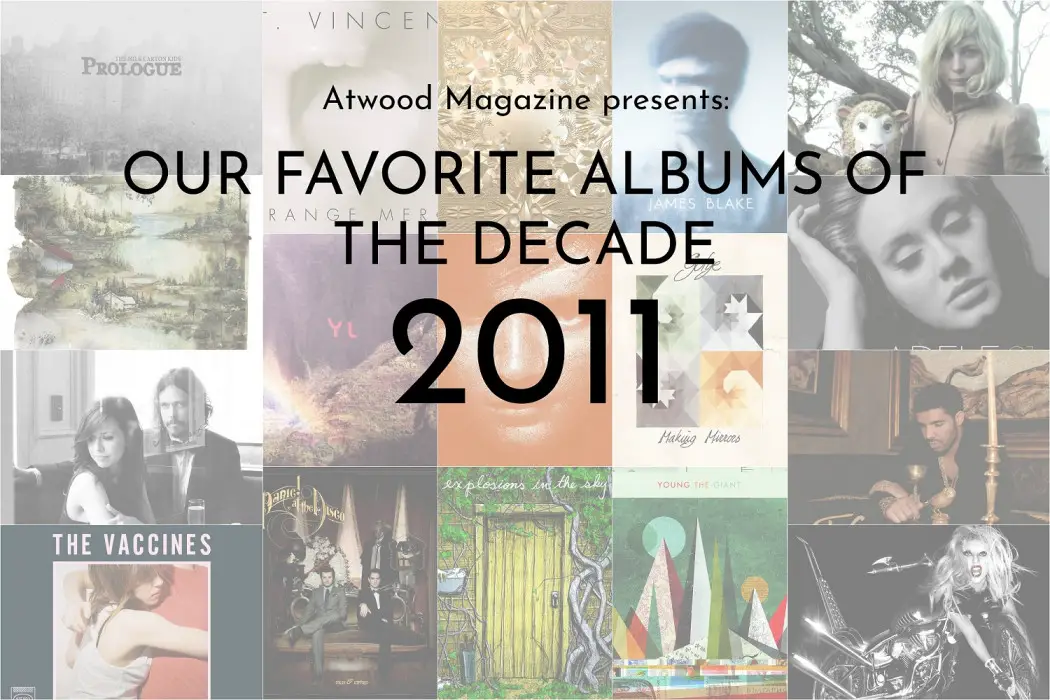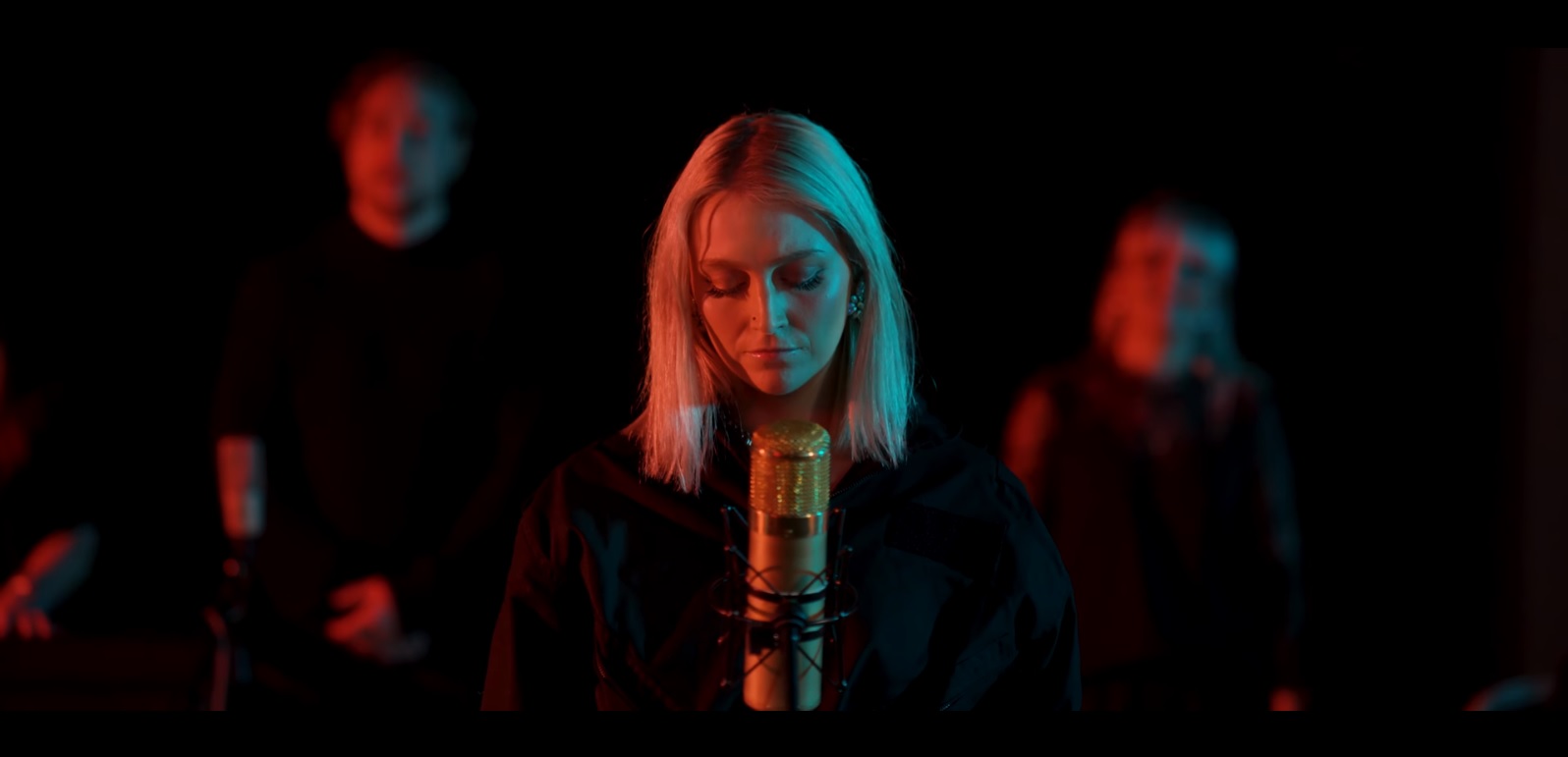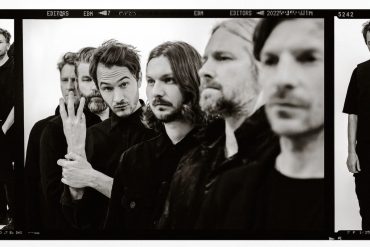Bon Iver Youth Lagoon Adele The Civil Wars St. Vincent Gotye Drake The Head and the Heart Jay-Z and Kanye West Ed Sheeran Young the Giant Lady Gaga Explosions in the Sky Panic! at the Disco James Blake The Vaccines The Milk Carton Kids
The 2010s are coming to a close, and with them ends an exciting era of musical innovation and societal transformation. The past ten years have seen the breakdown of genre, increased accessibility for content creators, and new modes of access for music consumers. Downloads bowed to streams in the West, and artists like Justin Bieber, Drake, and Taylor Swift rose to international superstardom – but this is just the tip of the iceberg of a busy, busy age; it seemed like the more connected we were, the more disconnected we felt. Music was a means of transcending distraction and hardship; a vessel of understanding that lent us stability for moments of stress and doubt.
How better to capture a decade in music than in the words of those who lived it and breathed it? Atwood Magazine is proud to present Our Favorite Albums of the Decade, in no particular order (you can jump directly to an artist by clicking their name above, and return to the top of the page by clicking any album art below). For ten weeks, our writers will be breaking down the music of the 2010s year by year. These are the records that shaped the people we are today: The music that carried us through pivotal milestones, the songs that together form the soundtracks to our lives. We have grown and changed, matured and evolved, but in this time of reflection, we can still feel the sense of wonder we felt as listeners pressing “play” for the very first time.
This week we celebrate 2011 in all its eclectic glory: From Jay-Z and Kanye West’s epic hip-hop collaborative Watch the Throne, to Bon Iver’s intimate masterpiece Bon Iver, Bon Iver, Adele’s intensely vulnerable outpouring 21, The Civil Wars’ breathtakingly raw Barton Hollow, Lady Gaga’s zeitgeist-defining Born This Way, and more.
Mitch Mosk, Editor-in-Chief
— —

 Our Favorite Albums of the Decade
Our Favorite Albums of the Decade 
Our Favorite Albums of 2011
Seldom, if ever has there been as intimate and introspective an album as Bon Iver, Bon Iver. The indie folk champion’s second record does not so much capture time and place, as it does the profound qualities of isolation and being; to dwell in it is to immerse oneself in a space where the loneliness of our individual existence is boldly and beautifully soundtracked. Bon Iver showed us the true colors of vulnerability through the minimalist lens, and if he hadn’t been one already, he quickly became an underground hero: An alternative voice for millions of whispers.
Every Bon Iver album is a reintroduction, and we learned that lesson for the very first time through Bon Iver, Bon Iver. Justin Vernon’s evolution was evidenced immediately, and equally welcome: The album was quiet, yet loud; atmospheric, yet earthen; tangible, yet ethereal. The intimate epic “Perth” set the mood for the record; a cinematic musical eulogy, it harnessed sorrow as a sort of emotional sword and shield we could wield to better understand life and, in tandem, ourselves. Fragility reigned supreme on “Holocene,” moving our bones to shiver from the heartache of loss and knowing. “Wash.” and its heavenly, celestial orchestration gave our solitude a colorful, yet simultaneously muted framework that evoked a more subtle kind of passion. Closing the door on this experience was “Beth/Rest,” the graceful grand odyssey that wrapped Bon Iver’s permeating sorrow in a perfect, visceral bow.
Bon Iver left us with a sense of amazement and wonder, empathy and self-knowing. Even if we didn’t understand a single word, we knew what the music meant. Bon Iver, Bon Iver transcended the moment; it was and remains a timeless embodiment of some of humanity’s deepest and most meaningful emotions, a journey of intimacy and connection expressed directly through the language of music. – Mitch Mosk, New York
The first time I finished listening to The Year of Hibernation, I was laying on the floor, eyes and mouth wide open as I stared blankly at the ceiling. I’ve never had a listening experience like it, this mixture of lo-fi pop mixed together with ethereal vocal melodies that evoke sensations that most would think lay dormant. A fire emerged in me, one that left me with a warmth for hours after listening. I’d often find myself closing my eyes, swaying to each track and losing myself a little more with each passing minute. Then it became apparent that I was in a trance, bewitched by the album’s docile yet unrelenting rhythms and tempos, experiencing myself from outside my body, viewing the world through a different lens. Youth Lagoon had shaped much of my formative years, and The Year of Hibernation was the start of it all.
Tracks like “Posters” and “17” are undoubtedly monumental pieces of music, but “July” stole the show for me, though. To this day I cannot listen to this song without losing myself completely to it with its emotively stirring presence. The slow buildup bubbles and creates this swirling dreamscape of hazy memories. The soft instrumental touches mixed with the humming background noise enrapture me as they morph into drums and guitar. Trevor Powers continues his story, achingly crooning with an impassioned performance that leaves me stunned with each lyric sung. An onrush of instruments and boisterous vocals come forth, bringing with them a sonically induced ethereal wind which stirs unrelentingly. As faint as a whisper, the track ends with a soft touch, my mind feeling whole once again. Both sweet and haunting, The Year of Hibernation provides a window in Powers’ world, and listeners should feel all the more thankful for it. – Adrian Vargas, Seattle
Despite the fact that Adele has become a huge cultural touchstone, it’s easy to forget what a phenomenon this record was at the start of the decade. In an era where so much pop music was built on synthesizers, artificial beats, and auto-tune, Adele felt like an organic and subtle answer to the larger than life natures of Lady Gaga, Kanye West, and Beyonce. An album built on the raw force of Adele’s voice, matched with well thought-out instrumentation, 21 was both a point of strength and vulnerability. Matching hook driven pop songs like “Rolling in the Deep” and “Rumour Has It” with the intensely passionate epic numbers “Set Fire to the Rain” make it an ideal breakup record.
Of course, one can’t forget the simple charm of “Someone Like You,” a breakup song that’s the truest distillation of heartbreak possibly put to a pop record. The song is emotional without slipping into corniness or melodrama. Where plenty of popstars embraced the difficulty of breaking up, few did so with the grace that Adele did. – Jimmy Crowley, New York
The only thing more sudden than this Nashville duo’s stratospheric rise to fame was how quickly they disappeared. The Civil Wars seemed to appear from nowhere, a folk duo fresh off the bus from the 1930’s Dust Bowl with nothing but an acoustic guitar and the clothes on their backs. But what they lacked in complexity, they made up for in some of the most gorgeous songwriting to come out of any decade. Listening to Barton Hollow is boarding a time machine to the distant past and yet staying right where you are. It feels anachronistic and timeless all at once, like seeing all your past lives laid out in front of you. The threadbare soundscapes reward countless relistens, shifting their meaning like cloud formations on a distant, roiling skyline.
The songwriting pair of Joy Williams and John Paul White came out of a 2009 workshop in Nashville. After being randomly paired with one another, the duo quickly found they fit like two pieces of a puzzle. The effortlessness of their collaboration shines on Barton Hollow, their 2011 debut. On it, their voices often feeling like two thoughts in the same mind, harmonizing as often as they find discord. In “Birds of a Feather” they dance around one another, counteracting the melancholy melody with their bond:
Oh, we’re a pretty, pretty pair
Yes, are are
All, all the king’s horses
And all of his men
Couldn’t tear us apart
“Poison and Wine” tells a very different story though. Williams and White spar through differing points of view, painting a loveless relationship that neither can escape.
I wish you’d hold me when I turn my back
The less I give, the more I get back
Oh your hands can heal, your hands can bruise
I don’t have a choice and I still choose you
Unfortunately, the latter portrait was closer to the truth. Following the resounding success of Barton Hollow and its self-titled follow-up two years later, the two parted ways. Though they both continue to write and perform their own songs, the hole they left in the absence of the Civil Wars can still be felt on every withering breath of their debut. It’s the sound of two artists in perfect creative harmony, dancing, diving, and twirling like sparrows on the wind. Folk music arguably hasn’t seen their equal since, but Barton Hollow will always stand as a testament to their historic and brief talent. – Anthony Kozlowski, Los Angeles
In 2011, Annie Clark, better known as art pop and alternative rock artist St. Vincent, released her third album Strange Mercy – laying the groundwork, in my opinion, for what indie rock and pop could sound like in the coming decade. I remember the first time I heard “Cruel,” one winter morning in my friend’s car on the way to my senior year of high school. I was instantly enchanted by its strange melody, Clark’s unerring sense of theatrics. As she became bigger, so did her productions. Masseduction was the poppiest she’d ever been, working in sparkly bubblegum tones with this year’s favorite producer, Jack Antonoff. But in that space near the beginning, there was the mournful, old Hollywood glitter of “Dillettante,” the breathy, on-the-edge-of-climax chorus of “Cheerleader.” In Perfume Genius’ “Sides,” I hear the echo of the gritty, bending guitar on “Cruel.” Her work has permeated every facet of pop music since this album. “Come cut me open,” she sings on “Surgeon,” inviting the listener inside, forever charming anyone who came to her strange, merciful world. – Mariel Fechik, Chicago
In early July of 2011, Gotye released the biggest single of his career with the plucky, mournful “Somebody That I Used To Know.” Featuring vocals from Kimbra, the song took off exponentially, and is undoubtedly Gotye’s signature release. A month later, he released his second studio album Making Mirrors. The artsy album celebrates ’80s pop just as much as soul, psych rock, indie pop and even futuristic electronic elements across its brief, 43 minute runtime. Gotye tackles serious, relatable themes with a broader emphasis on reflection throughout Making Mirrors, all of it steeped in smart lyricism and razor sharp production that celebrates the old and the new in beautiful harmony.
“Somebody That I Used To Know” is the most popular track on the album, but the rest each carry their own stamp of greatness. The imposter syndrome exhibited on “Smoke And Mirrors” cuts deep, while the brightness and overall joy on “In Your Light” is a happy, welcome relief to the heady work before it. Meanwhile, “State Of The Art” is so different from everything else on the album that it simply demands to be enjoyed in all its vocoder glory. As iconic as “Somebody That I Used To Know” is, Making Mirrors deserves to be listened to and celebrated in its entirety. The range is nothing short of impressive, and it cements Gotye as a thoughtful and extremely talented musician, songwriter and producer. – Alex Killian, San Francisco
Drake dropped his first full-length album Thank Me Later in 2010, swiftly followed (in true Drake Fashion) by Take Care in 2011. Take Care introduced the Drake that we’ve all come to know today. It introduced that albeit, softer side of who he is; which undoubtedly is not a side most rappers choose to show. With ballad like tracks such as “Marvins Room” and “Shot for me,” true love songs like “Take Care,” and classic punch ups like “The Motto” and “Headlines” Drake runs the entire spectrum of his capabilities with Take Care. It is an epic body of work that changed the game. It’s an album that can be listened to over and over again. – Kelly McCafferty, New Orleans
It feels impossible to discuss outstanding music that was released in 2011 without mentioning The Head and the Heart’s eponymous album. The Seattle, Washington based group that formed just two years prior made a splash in the indie folk/Americana scene with this colorful debut. With a name like The Head and the Heart, it should come as no surprise that this band creates music that hints at pondering some of life’s deeper meanings and questions. In a 2013 interview with Mother Jones magazine, Josiah Johnson, one of the founding band members, discussed why the group was called such. He admitted that the name was inspired by the dissonance between emotion and logic, and how growing up, he was expected to go down a more traditional path in regards to his career and beyond. “I started realizing that being in bands was going to not be just a hobby, but what I was going to do with my life,” he said. “And though your head is telling you to be stable and find a good job, you know in your heart that this is what you’re supposed to do even if it’s crazy. It’s a balance of weighing out things out.”
The Head and the Heart’s first album is laden with songs that are fit for a coffee shop, a long car ride, or anywhere in between. They’re songs for saying goodbye (Rivers and Roads), for reflecting (Down in the Valley), for finding a way to be present (Lost in my Mind). The Head and the Heart is easy. Effortless. Despite the fact that many of their songs on this album tackle larger, more lofty topics, they maintain their groundedness with their stripped back, earnest production style and raw lyrics. – Madison Vettorino, Poughkeepsie
On the one hand, perhaps it was a tad boastful for two men to declare themselves to be the undisputed kings of their industry. On the other hand, no one argued. Jay-Z and Kanye West were plainly as powerful as just about any rap artists in history had ever been when they recorded their first joint LP in 2011. In the same year that the newly-released Game of Thrones guaranteed that we would all be keeping our eyes on a certain Throne for the remainder of the decade, these two hip-hop titans got the trend going strong with Watch the Throne.
Interestingly enough, luxury-oriented as its lyrical content was, Jay and ‘Ye didn’t seem so keen on making that much money off the album itself. They even provided it as a free download to fans who pre-ordered tickets for the accompanying Watch the Throne Tour— no one who took them up on the offer, this writer included, will ever regret that decision. Lead single “Otis” was also far removed from the typical money-hungry lead singles of many mainstream rap albums— no high-profile guests, no singsong chorus, and glamorous production eschewed for a minimalist loop of Otis Redding yelping on repeat.
Instead, what the two rappers did want from this project was to explore what creative possibilities could arise from making a full-length collaboration album after years of working together in other contexts. On paper, this was cause for celebration. On record, the party raged like crazy on the massively fierce “Who Gon Stop Me,” “Welcome to the Jungle,” and “Niggas in Paris.” The latter of these was performed between three and twelve times at each stop on the Watch the Throne Tour, a wild level of excess which encapsulated the glamorous and festive atmosphere of the accompanying record.
Yet in the middle of all the fun, the two MC’s made room for their serious sides. “New Day” remains among the most candid and introspective tracks either one has ever made as the two traded thoughts on fatherhood. “Murder to Excellence” was a powerful stop-the-violence anthem that would have done KRS-One proud. On “Made In America,” both rappers correctly emphasized how they were fulfilling the dreams of the Civil Rights leaders of yesteryear— whom Frank Ocean name-checked on a chorus that marked one of his earliest instances of national exposure— through their own achievements as African-American icons.
“Not bad, huh, for some immigrants?” as Jay-Z had expressed a few tracks earlier on “Otis.” Indeed. No matter the authors, the musical heights reached on Watch the Throne would have been an impressive accomplishment. – Josh Weiner, Washington, DC
Once in a lifetime, you hear a song so special that every time you hear it again from that day forward, it takes you back to that first moment you heard it. “Lego House” by Ed Sheeran does that for me because the first time I heard, “It’s dark in a cold December, but I’ve got you to keep me warm,” on pop radio, it was the first time I had ever heard myself reflected in any way through any kind of popular music… Ever.
Despite 5 previous EP releases under his belt, + is considered by many to be the British singer-songwriter’s huge commercial breakthrough, and rightfully so. Releasing + in the year 2011 might have been the best thing Sheeran could have ever done for a career take off. Songs like “The A Team” and “Lego House” shot up the charts worldwide in record-breaking time. Listeners were loving the organic, folk sound of his acoustic songs, and the radio was loving his unique cadence. The whole “singer-songwriter” ideal might not have been new, but in 2011 with the rise of hip-hop on the popular music circuit, Sheeran’s mix of the two genres opened doors for him to take the stage in a way that nobody had before. “Lego House” starts off like any traditional acoustic song would, but at thirty seconds in, Sheeran’s ability for fitting a load of meaningful words in such a short amount of time layered over nothing but his acoustic guitar shines through. After inviting him to open up for her on tour, Taylor Swift said of Sheeran, “No one else is writing pre-choruses like that, or verses like that,” – and that was just for the songs that got played on the radio.
The rest of + showcases Sheeran’s ability to use lyrics in stunning, autobiographical ways. Under the influence of great lyricists like Eminem, James Morrison, and Damien Rice, + was once referred to as “folk for today.” From vulnerable love songs like, “This” or “Kiss Me” straight to the fast-paced, “You Need Me, I Don’t Need You,” the album reveals more than just “another guy with a guitar.” With a soft acoustic song on the radio played before and after the likes of Drake and Lady Gaga, it was hard to fit the songs into one category, and the sound simply evolved into, “Ed Sheeran’s sound.”
+’s unique acoustic-grime infusion served as Sheeran’s way of crossing over from the British music landscape to the US charts, which is something that is still very difficult for a lot of UK-based acts to do. With songs as newly honest and open as 2011 had ever seen from songwriters of his generation, an audience that spanned from grandparents to young children, and praise from people like Elton John along the way, Sheeran’s rise to fame that was born out of his undying work ethic soon became unparalleled. From + to “Shape of You,” a lot can be said about the artist’s shift in sound, however, his songs from 2017 still scream “Sheeran” just as much as his songs from 2011 did. Penning top-charting hits for artists like Justin Bieber, Khalid, and Halsey, his sound is something that continues to outlast expectations. Peaking at number five on the US Billboard 200, + is the album that has set the blueprint for the singer-songwriter genre in a 21st-century music scene. We get a few great ones once a generation if we’re truly lucky – Bob Dylan. James Taylor. Ed Sheeran.
I was in the car on the way to school the first time I heard, “Lego House.” The first time the acoustic-folk sound had ever achieved such love and praise on pop radio. The first time the world was introduced to a new name with a guitar. Eight years later, Ed Sheeran has the record for highest-grossing tour of all time, a song on the radio every twenty minutes, and a name no one will ever forget now. – Erica Garcia, Los Angeles
Young the Giant’s legacy began in 2011 with an illustrious set of rock songs rife with angsty tension and youthful energy. Young the Giant is and has always been so much more than “Cough Syrup”: Beginning with the unassuming elevation of the everyday in “Apartment,” the California band developed a cohesive high-octane sound that cherished dynamic contrast, melodic richness, and constant searching for answers and meaning. The urgency and raw passion driving the explosive “My Body” perhaps best expresses Young the Giant’s artistry in their nascence: Bold, relentless, and optimistic with sprinklings of self-doubt and learned uncertainty, they embraced life in the moment and pushed us feel it with them. – Mitch Mosk, New York
When one thinks of Lady Gaga, certain things immediately come to mind: her uniquely distinctive voice, her wigs, A Star is Born, the meat dress. Often among this list, too, are her most iconic songs: “Just Dance,” “Pokerface,” “Telephone,” and, of course, “Born This Way.” And the album from which the latter song comes is nothing short of iconic in itself. Born This Way the album solidified Gaga as a queen of all things pop, as she presented herself as confident, witty, and – most importantly – smart, curating her distinctive persona further to the point of near-untouchable status.
While Gaga’s debut album The Fame and subsequent The Fame Monster helped establish her as a preeminent pop goddess, Born This Way ultimately allowed for her natural prowess to shine through tenfold, with songs like “Judas,” “Edge of Glory,” “You & I,” and the eponymous “Born This Way” each showcasing parts of Lady Gaga that further shaped the way in which we view her today. As a whole, Born This Way is pure pop goodness, highlighting the best of its sensibilities while simultaneously giving Gaga space to grow and reinvent the space entirely. As an album, a casual pop fan could listen and thoroughly enjoy the album’s general aspects; meanwhile, a Gaga fan could do the same while also noting particularities that feel so inherently Gaga.
Born This Way is Lady Gaga at her brightest and boldest, allowing her the opportunity to expand beyond just the basic pop formulae. Laced within the album, Gaga still managed to incorporate a personability that gave listeners a chance to get to know Gaga the person better, rather than just Gaga the performer. Ultimately, Lady Gaga opened herself up to vulnerabilities not previously seen in her prior releases, and this subsequently allowed for fans to feel further connected to an ostensibly aloof pop queen.
Born This Way wholly reassures listeners that, most importantly, one should always remain true to themselves. Lady Gaga has long championed this ideal, providing a safe space to the disenfranchised to feel like they can be unapologetically authentic. Setting aside general significances of love and acceptance, Born This Way ultimately allows for those who feel marginalized within society to be proudly and loudly who they are no matter what; the album strikes a chord with those who oft feel unheard. The album, and Gaga herself, continue to serve as a megaphone for the weirdos, the lovers and the losers to be steadfastly confident. Let the freak flags fly, proud and high. – Maggie McHale, Philadelphia
Few bands have mastered the use of tension and release better than Explosions in the Sky. Their ability to sonically rise and fall creates a hypnotic wave that pulses through the speakers and into your soul, leaving you adrift yet comfortably warm. While the idea of instrumental-rock may sound boring, the absence of lyrics forces the Texas four-piece to be creative and delve into areas previously unexplored. The result is melodic, soothing, and at times epic.
2011’s Take Care, Take Care, Take Care is the epitome of this sound: Each song feels like it’s own adventure. They start deliberately slow, with plucked guitars and a simmering sense of tempo. You know it’s going to explode, but with the shortest song still clocking in at over seven minutes, there’s no rush to get there. The suspense just adds to the excitement. This constant building takes you along a path to an unimportant destination: It’s the journey that matters. The emotive nature of the instruments makes the album—and therefore the listener—feel sad, overjoyed, or overwhelmed. It lingers in these emotions, making you contemplate your own highs and lows before methodically heading into another terrain.
Take Care, Take Care, Take Care is an album that demonstrates the vulnerability and emotion that music can still portray without lyrics. And it’ll rock your socks off too. – Oliver Crook, Halifax, Nova Scotia
Vices & Virtues is the third album by Panic(!) at the Disco and the first to be released following the infamous split that halved the band. Little did we know that eight years and several bandmates later, the band would be halved and halved again until it was reduced to the solo project it currently is. If the unnecessary, and temporary, dropping of the exclamation mark in their band name wasn’t enough of a hint, Vices & Virtues was period of severe uncertainty for the group. Just off the back of their strongest and most ambitious album to date, Pretty Odd. Urie had a lot to live up to.
While it still stands strong amongst its more recent counterparts, there’s something disjointed and directionless about this album. The album is an emo concoction of suits, steampunk and love songs that slips into this dark crevice where it’s too punk to be pop, but too pop to be punk. There’s an overall lack of continuity. Whereas A Fever You Can’t Sweat Out was a punk-cabaret spectacle and Pretty. Odd. a colourful lament to the Beatles, Vices & Virtues always felt like a disappointing third child. Despite this, the commercial success of ‘Ready to Go’ and ‘The Ballad of Mona Lisa’ kept Panic! floating on the brink of relevance still and paved the way for a future of low expectations.
The most intriguing aspect of Vices & Virtues is the impressive catalogue of bonus tracks that accompanied various releases and cannot be found on any singular platform: ‘Bittersweet’, ‘Stall Me’, ‘Oh Glory’ etc. When combined, the entirety of the excess catalogue is enough to overshadow the finished product itself, not to mention the standalone single ‘New Perspective’ that featured on the iconic, teen-horror Jennifer’s Body soundtrack. Vices & Virtues was the product of a decade’s end, trying desperately to drag the aesthetics of ’00s pop-punk into 2011 while the world propelled ahead, leaving behind Panic!, LiveJournal, MySpace, and other relics of the past. This album marked the beginning of Panic! At the Disco being always a step behind the industry. – Christine Costello, Limerick, Ireland
In the four or five decades since synthesizers began to enter pop music, they have been faced with a love/hate relationship with human emotion. Where the first experiments with computer bleeps and bloops were Kraftwerk imitating machines, or Georgio Moroder and John Carpenter making terrifying film soundtracks, synthesized waves have made the transition into mainstream pop, and rock, and sometimes even folk. The humming, oscillating sounds of ProTools no longer feel so explicitly alien.
But for all that we’ve come to treat synthesizers as just any other acoustic instrument, there is no example of a laptop sounding so emotional, so romantic, so human, as James Blake’s 2011 debut album. In a year when electronic music was consumed by the oppressive WOMPWOMPWOMP of Skrillex and America’s obsession with LFO filters, Blake came out of the London dubstep to quietly zag their zig. It’s not that Blake is any less enthusiastic about Low Frequency Oscillators than Skrillex. It’s that where other EDM artists used the overwhelming wubwub sound to oppress the listener at enormous music festivals, Blake uses it to draw the listener into an intimate, private place.
The line between Blake’s own soft tenor and the synthesizers that surround it is all but erased. His voice is auto-tuned and vocodered to the point of alienation, while the synth pads that swirl around it are drowned in reverb and played so tenderly that when, near the end of the album, the computers drop out and he plays a simple solo piano torch song on “Give Me My Month,” the acoustic ballad feels wholly of a piece with the songs that came before it. At its core, James Blake is a singer-songwriter album, finding more in common with Joni Mitchell (or, as he shows with his played-completely-straight cover of “Limit To Your Love,” Feist) than deadmau5. It’s the sound of a robot learning to love. – Jon Hecht
Following in the footsteps of early-aughts legends like Arctic Monkeys and The Courteeners, The Vaccines rounded out an era of ambitious Brit-pop revivals. The West Londoners brought an impressive, established sound to their now-iconic debut record, which was recorded in less than one year after the band was formed. What Did You Expect From The Vaccines? is a textbook demonstration of how to blend the alternative with the mainstream, seamlessly transitioning from Ramones-inspired post-punk to radio-ready, stadium-sized singles.
There’s a disheveled touch around the edges of this record that balances with what some may argue is an overly polished garage-band atmosphere. What Did You Expect From The Vaccines? moves at a breakneck pace, opening with 82 seconds of CBGB’s worthy reverb. “Wreckin Bar (Ra Ra Ra)” and “If You Wanna” showcase The Vaccines in their purest form: guitars ferociously strummed and drums pounded to smithereens. The endlessly catchy melodies continue with “Post Break-Up Sex,” “Norgaard,” and “A Lack of Understanding,” all of which come equipped with tongue-in-cheek lyrics and a too-cool-to-care attitude. Though The Vaccines’ debut carved out a space for them within the modern prog-rock camp, they also thrive in the record’s more mellow moments. On “Wetsuit” and “All In White,” Justin Young’s stellar vocals elevate the record from a flash in the pan success to a genre-defining album with nearly a decade of staying power. – Meredith Nardino, New York
In 2011, folk duo The Milk Carton Kids released their debut Prologue, just in time to set my evolving life to a soundtrack that would bring any feeling person to their knees. Prologue was on permanent repeat as I carefully packed my life into boxes and headed from one temporary home to, what I’d hoped would be, a more permanent one. The Milk Carton Kids’ richly melancholic and anecdotal lyrics aligned perfectly as I reminisced about the beautiful and challenging life I had lived in my almost old home. The swell of their hopeful harmonies filled my heart as I wondered what adventures were awaiting me in my new one.
I remember the moment I stood in my creaky and echoing apartment to say farewell. It seemed so appropriate to sing goodbye…
This don’t feel like home anymore
Nothing’s familiar when I walk through my door
So I thank the heavens or who’s ever in charge
This don’t feel like home anymore
I turned off the lights and closed the door as I hummed the rest.
But the move wasn’t over yet. And luckily there was a song for that too. As I pulled away there was “Michigan.”
Michigan’s in the rearview now
Keep your hands where I can see them…
The Milk Carton Kids intertwine their voices with a twang that bends words to make them feel so weary, sincere, hopeful and raw. It was exactly how I felt and it was perfect. – Ilana Kalish, New York
 Our Favorite Albums of the Decade
Our Favorite Albums of the Decade 
— — — —
Connect to Atwood on
Facebook, Twitter, Instagram
Discover new music on Atwood Magazine









